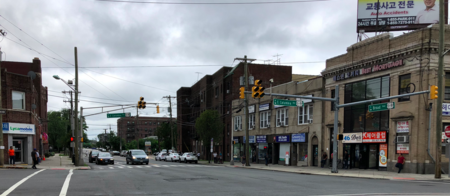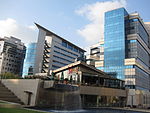Koreatown, Palisades Park
Asian-American culture in New JerseyEthnic enclaves in New JerseyKorean-American culture in New JerseyKoreatowns in the United StatesNeighborhoods in Bergen County, New Jersey ... and 1 more
Palisades Park, New Jersey

Koreatown in the borough of Palisades Park (Korean: 팰리세이즈 파크 코리아타운, shortened to Pal Park 팔팍), Bergen County, New Jersey, United States, is centered around the business district on Broad Avenue, which has been called a "Korean food walk of fame".
Excerpt from the Wikipedia article Koreatown, Palisades Park (License: CC BY-SA 3.0, Authors, Images).Koreatown, Palisades Park
2nd Street,
Geographical coordinates (GPS) Address Nearby Places Show on map
Geographical coordinates (GPS)
| Latitude | Longitude |
|---|---|
| N 40.847016666667 ° | E -73.997061111111 ° |
Address
2nd Street
07650
New Jersey, United States
Open on Google Maps






